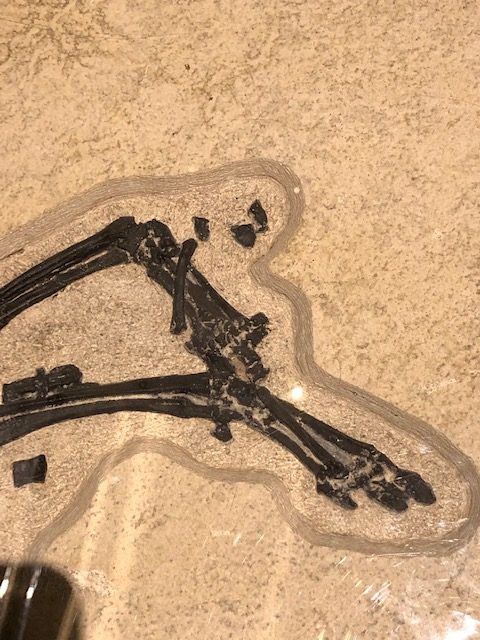
Photo courtesy Mary Heers, Photographer
 Cache Valley Mosquito Trap
Cache Valley Mosquito Trap
Courtesy & Copyright Mary Heers, Photographer
 Cache Valley Mosquito Trap
Cache Valley Mosquito Trap
Courtesy & Copyright Mary Heers, Photographer
 Cache Valley Mosquito Trap
Cache Valley Mosquito Trap
Courtesy & Copyright Mary Heers, Photographer“West Nile Virus Found in Mendon.” This warning, printed in big block letters, definitely caught my attention when I walked into the Mendon Post Office. The poster included a picture of a mosquito and a message saying “Please take the necessary precautions to protect yourself and your loved ones.”
The warning came from the Cache Mosquito Abatement District. Curious, I called them up. I found out that their staff goes out once a week and activates 18 mosquito traps at rural locations throughout the valley. They invited me to go along and see how they collect their test mosquitos
I was surprised to find out its carbon dioxide that attracts the mosquitos. The sun was setting when we pulled up to the first stop and found the cylinder of CO2 already in place on the ground. The first step was to turn on the CO2, a slow flow emitting about as much as a human exhaling. Next, they snapped a battery into place on the underside of a metal disc that was hung a few feet above the CO2 cylinder. This disc, that looked a lot like a broad brimmed man’s hat, also held a small fan which now started whirring. The last step was to tie on a white mesh bag below the fan.
The trap was now emitting an enticing trail of CO2. When the mosquitos arrived, the fan would blow them into the mesh bags.
Early the next morning, it was time to turn off the CO2, and retrieve the batteries and the mesh bags.
Back at the lab, the mesh bags made a quick trip into the freezer, which killed the mosquitos.
Then the mosquitos were emptied onto a black tray and counted. Of the varieties of mosquitos in Cache Valley, only the Culex carries the West Nile virus.
To the trained eye of the staff, it was short work to separate the Culex from the rest. These mosquitos were then packed into small vials and sent to the lab in Salt Lake which runs the tests for the West Nile virus.
We now know that West Nile is one of the viruses transmitted by a mosquito bite. And with the help of high-powered microscopes, we can see that a mosquito bite is actually the complex work of 6 needlelike shafts housed in the female mosquito’s protruding mouthpiece. Two shafts with serrated edges saw through the victim’s flesh, two hold the cut open, and two are inserted into the cut. These last two function like straws, one to suck blood up and one to carry down anti-coagulant saliva to keep the blood flowing. It’s the mosquito’s saliva that transmits the virus.
For most people who become infected, West Nile feels like a bout of flu. But for 1 in every 150, it can lead to deadly neurological problems. Now that we’ve been warned, we would be wise to take some precautions: Drain any stagnant pools of water in our neighborhoods where mosquitos can breed. Wear long sleeve shirts and long pants after dusk- the Culex fly at night.
And let’s not forget that some of our valley bats are helping us. Some bats can eat as many as 500 mosquitos in an hour. But that’s a story for another day.
This is Mary Heers and I’m Wild About Utah
Credits:
Images Courtesy & Copyright Mary Heers, Photographer
Featured Audio: Courtesy & Copyright © Friend Weller, Utah Public Radio upr.org & Cook Laboratories https://folklife.si.edu/archives-and-resources/cook-labs-records
Text: Mary Heers, https://cca.usu.edu/files/awards/art-and-mary-heers-citation.pdf
Additional Reading: Lyle Bingham, https://bridgerlandaudubon.org/
Additional Reading
Wild About Utah Pieces by Mary Heers
Cache Mosquito Abatement District, visited September 25, 2024, https://www.cachemosquito.gov/
West Nile Virus, US Centers for Disease Control and Prevention, Department of Health and Human Services, https://www.cdc.gov/west-nile-virus/index.html
Goddard, Amanda, First human West Nile case confirmed in northern Utah; officials encourage prevention, The Leader [Tremonton], (HJNews), https://www.hjnews.com/tremonton/news/local/first-human-west-nile-case-confirmed-in-northern-utah-officials-encourage-prevention/article_3b654032-79c3-11ef-b350-3b31f525dce1.html
West Nile virus, Utah Epidemiology, Utah Department of Health and Human Services, https://epi.utah.gov/west-nile-virus/











